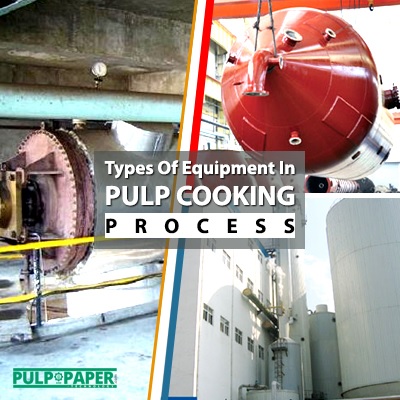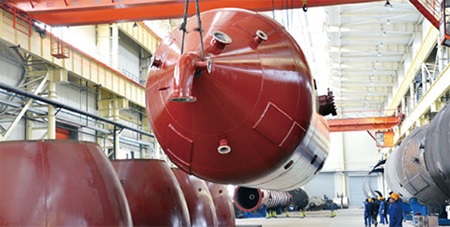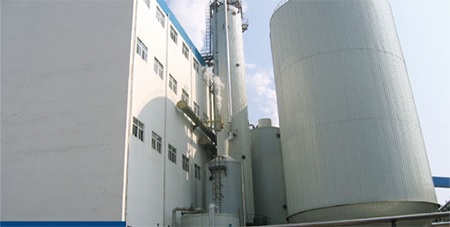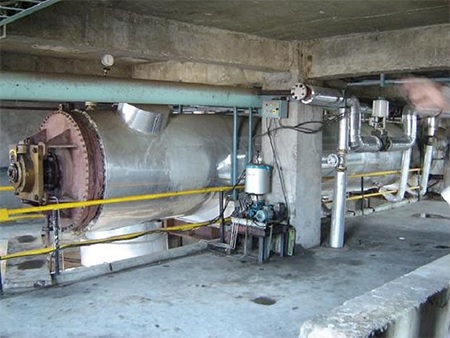Types Of Equipment In Pulp Cooking Process

Chemical pulping is best defined as a typical process for paper pulp production, which includes pulp cooking, screening, washing and bleaching processing. So, in general, many related chemical pulp machines, such as pulp digester, blow tank, disc filter, twin roll press, vacuum drum washer, and other pulp machines and related parts, are required for the whole set of chemical pulping production line. Kraft cooking or chemical pulp cooking is a traditional method in paper making industry, that converts any fibrous source or wood chips into paper pulp. High quality papers can be produced with the chemical pulping method, as most of the lignin and hemicelluloses remained in the wood, are dissolved in the Kraft cooking. This would result in the better separation of the cellulose fibers. In simple terms, Kraft cooking is the main step of paper pulping process. The pulp cooking process can be divided into two types, according to the difference in working mechanisms - batch cooking process and continuous cooking process.
In this article, we are going to know the types of equipment used in the paper pulp cooking process. They are -
- Pulp Digester
- Blow Tank
- Displacement Digester System
- Continuous Tubular Digester
A) PULP DIGESTER

Pulp digester or digester, is a large vessel for chemical pulping and dissolved fiber steaming section. As we all know, the raw materials of paper pulp like grasses, bamboo, wood and other sources are cooked in the digester. These raw materials react with a chemical liquid and get the paper pulp, which is mostly composed of cellulose. The paper pulp, can then be sent to washing bleaching system and applied to paper making processing. There are two types of digester in the chemical pulping productions, for the different pulping processing - vertical digester and horizontal digester. The vertical digester is used mostly for the super batch cooking. The most advanced batch-cooking technology -displacement cooking process is usually adopted, as it requires low cost and high-quality pulp is obtained. Different raw materials like 316L steel, carbon steel, stainless steel, duplex stainless steel, and composite plate are used in making of the digester series.
B) BLOW TANK

The blow tanks are usually made of carbon steel and the inner layer requires antiseptic treatment. The insulation is done on the outside of blow tank, in order to keep the pulp at a certain temperature in the blow tank.
C) DISPLACEMENT DIGESTER SYSTEM

Also known as DDS cooking system, the displacement digester system is the most advanced batch cooking technology in the world. It applies for bamboo pulp or wood pulp with 50-300 thousand tons annual output. The displacement digester cooking system is made up of storage tank, separator, conveyor, blow tank, digester, heat exchanger, black liquor filter and pump, foam breaker, and other equipment. Apart from all these, the displacement digester cooking system includes four basic units, such as heat exchange, exhaust gas separation, cooking, black liquor filter.
The advantages which are offered by the displacement digester system are :
- Washing function
- High pulp quality
- Reliable and stable system
- High production efficiency
- Less steam consumption
- Flexible pulp processing
- Less environmental pollution
D) CONTINUOUS TUBULAR DIGESTER
This is the main equipment of non-wood fiber pulp making. It can be used for both chemical pulping and chemi-mechanical pulping applications. At times, it can also be applied to the chemi thermo mechanical pulping and bio-mechanical pulp. Generally, non-wood fiber, wood shaving and some materials with low density are suitable for wet-method material preparation.
The advantages of using this continuous tubular digester are -
- Stable electricity and steam consumption and no peak load
- Even pulp quality and high coarse and stable pulp yield
- Flexible liquid ratio adjustment, less pollution
- High degree of automation, easy to adjust the process, high production efficiency, saves cost
- Continuous production
- Decrease the energy and chemical consumption, reduce cost of waste liquor recovery and pollution.
Market Insights :
As per a recently compiled report by Transparency Market Research (TMR), an average expansion has been projected over the forecast period, 2017 to 2026, for the global pulp market. It is estimated that more than US$ 60,000 Mn worth of pulp is to be sold across the globe by end of 2026.









